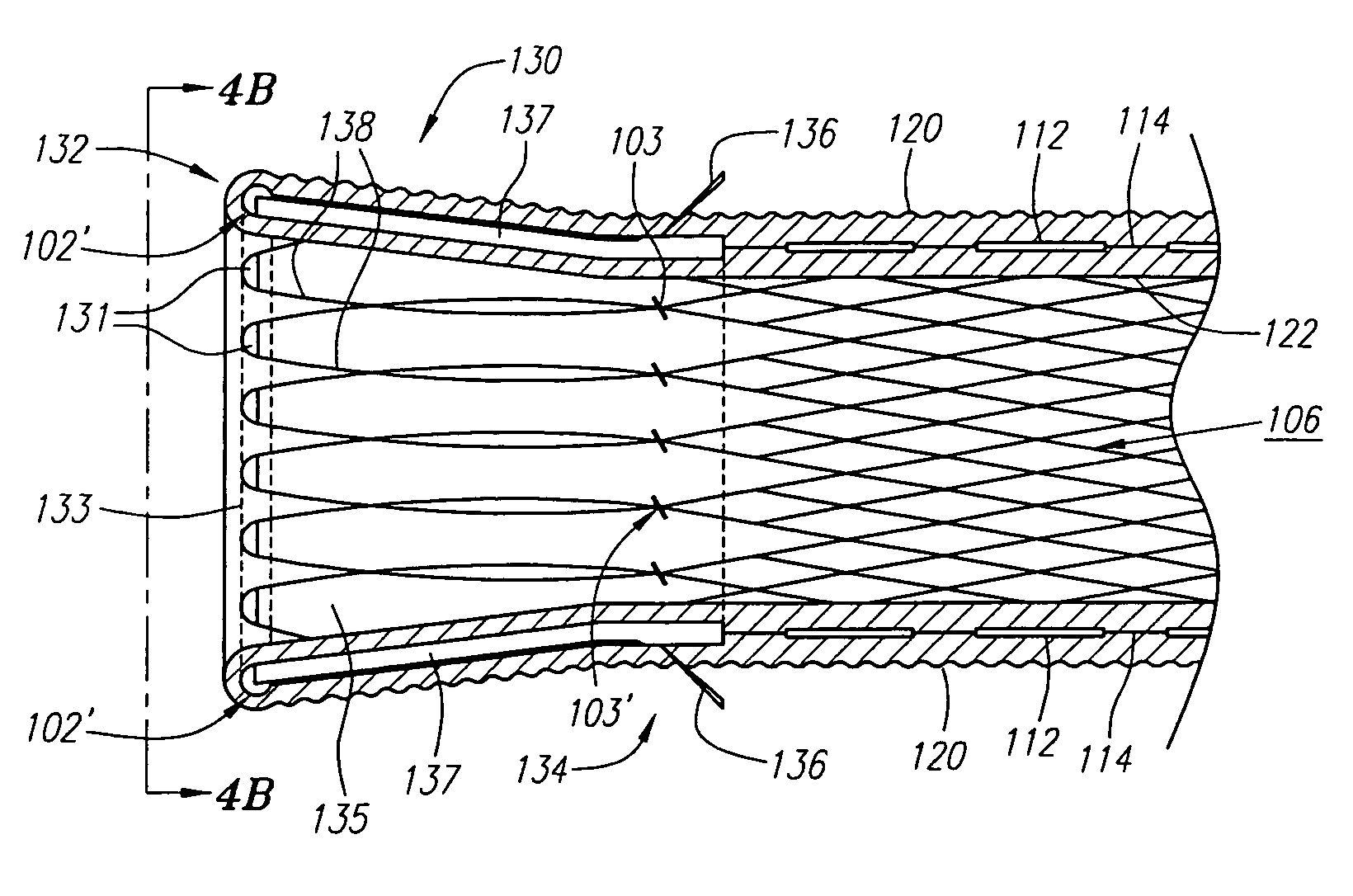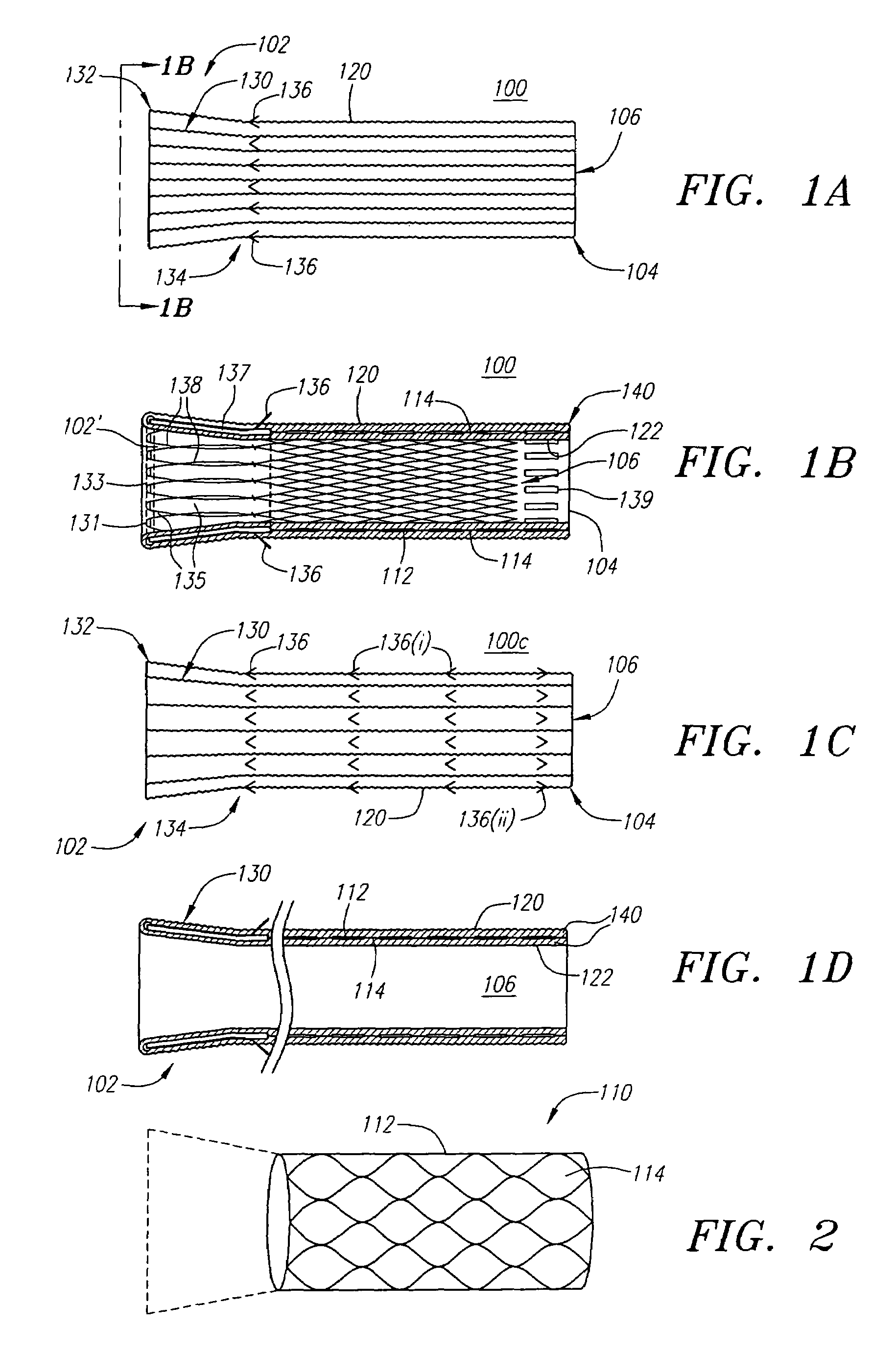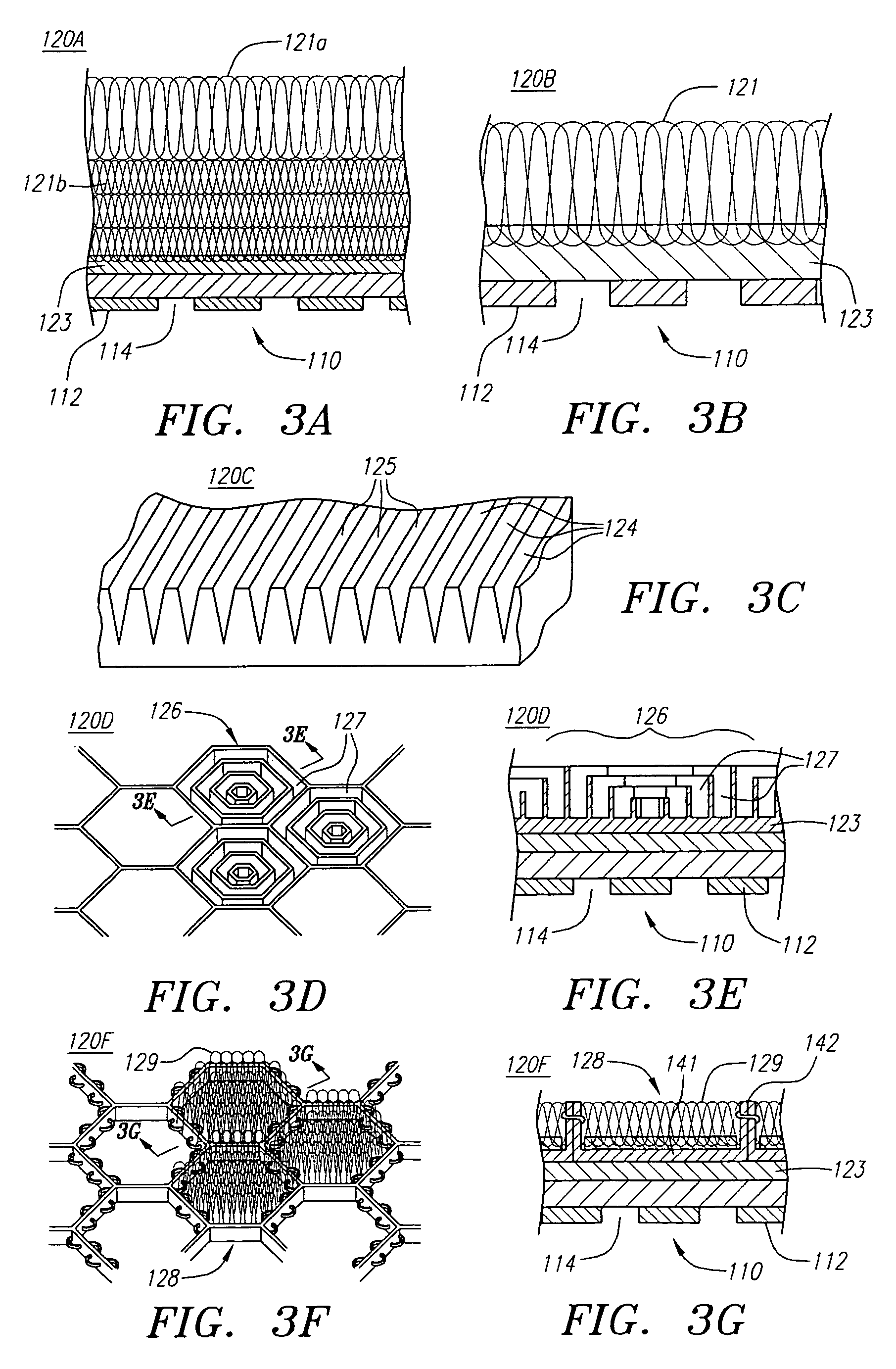Methods for forming and fabricating textured and drug eluting coronary artery stent
a textured, textured technology, applied in the direction of prosthesis, colloidal chemistry, blood vessels, etc., can solve the problems of increasing the risk of plaque causing an embolism, limited amount of drug agent that may be applied to the stent, and rapid elution rate of drug into the body lumen, etc., to achieve the effect of improving performan
- Summary
- Abstract
- Description
- Claims
- Application Information
AI Technical Summary
Benefits of technology
Problems solved by technology
Method used
Image
Examples
Embodiment Construction
[0053]Turning now to the drawings, FIGS. 1A and 1B illustrate one embodiment of the stent-graft 100 of the present invention. FIG. 1A shows a side view of the stent-graft 100, and FIG. 1B shows a cross-sectional side view of the stent-graft 100 along the line 1B-1B in FIG. 1A. The stent-graft 100 includes a stent 110, which is best illustrated in FIG. 1B, a textured external surface layer 120, a smooth internal luminal surface layer 122, which is best seen in FIG. 1B, and a collar 130. The stent-graft 100 is a generally tubular device, having a proximal end 102, a distal end 104, and a lumen 106 therebetween. As referenced herein, the proximal end 102 of the stent-graft 100 is the end of the stent-graft 100 that confronts or is oriented towards the flow of fluid in a body lumen, and is the end of the stent-graft 100 that is generally nearest the user or physician while the user is positioning the stent-graft 100 in the body lumen. For example, when placed within a coronary artery, t...
PUM
 Login to View More
Login to View More Abstract
Description
Claims
Application Information
 Login to View More
Login to View More - R&D
- Intellectual Property
- Life Sciences
- Materials
- Tech Scout
- Unparalleled Data Quality
- Higher Quality Content
- 60% Fewer Hallucinations
Browse by: Latest US Patents, China's latest patents, Technical Efficacy Thesaurus, Application Domain, Technology Topic, Popular Technical Reports.
© 2025 PatSnap. All rights reserved.Legal|Privacy policy|Modern Slavery Act Transparency Statement|Sitemap|About US| Contact US: help@patsnap.com



